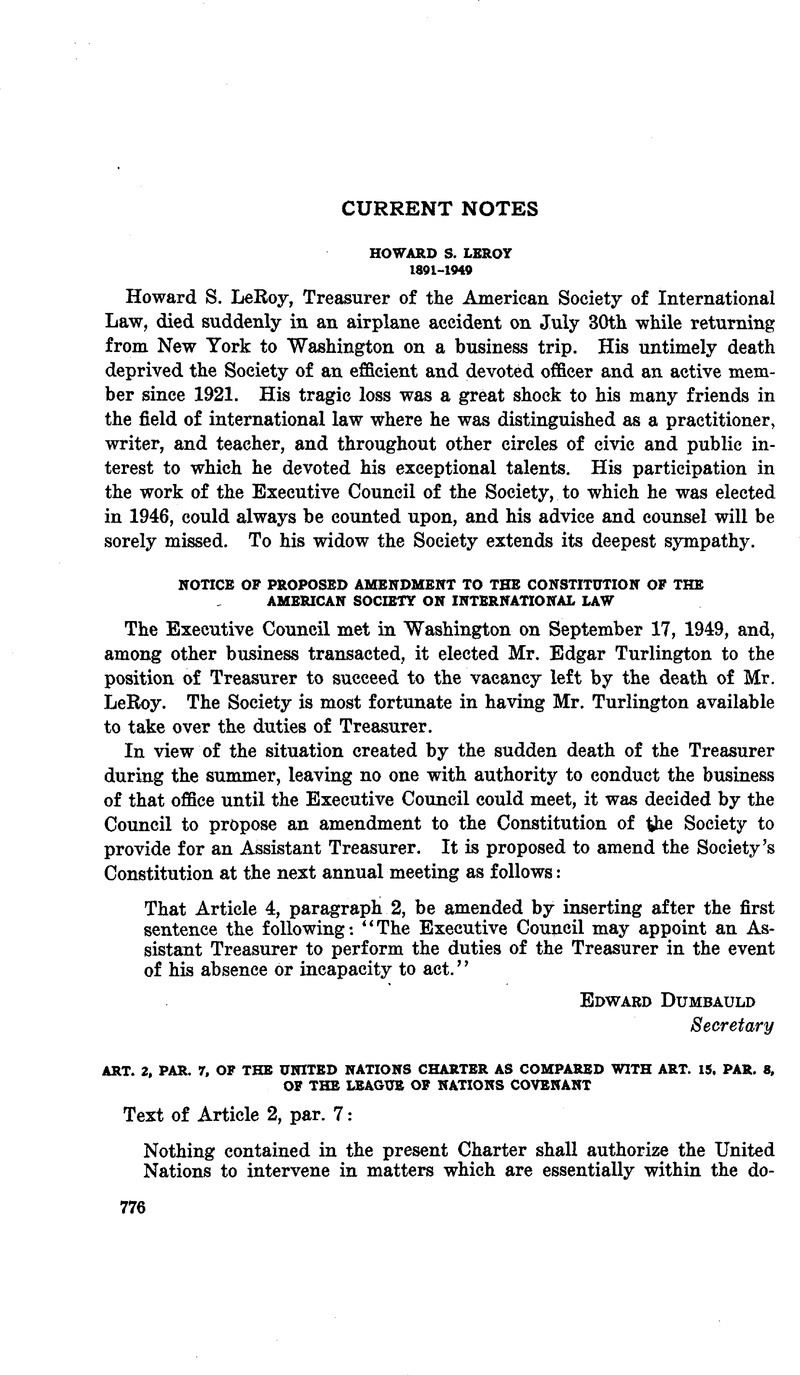No CrossRef data available.
Published online by Cambridge University Press: 20 April 2017

1 The same provision also applied to the Assembly of the League (Covenant, Art. 15, par. 10).
2 Such would not be the case, had the words “in the judgment of the Organisation” been inserted in Art. 2, par. 7, as advocated at San Francisco by a Belgian amendment rejected by an overwhelming majority (Documents of the U.N.C.I.O., Vol. 6, pp. 510-512). Cf. Eagleton, Clyde, in Tale Law Journal, Vol. 55, No. 5, pp. 979–980 Google Scholar; Hans Kelsen, ibid., pp. 996-1007.
3 The International Court of Justice may, in such connection, be called upon to render a judgment in a dispute between two Member States on whether one of them was entitled to challenge (or to uphold) the competence of the Organization. In particular, a Member State might conceivably seise the Court of a dispute which had arisen between itself and another Member State as to the conformity with the Charter of a vote cast by the latter state, within an organ of the United Nations, on the applicability of Art. 2, par. 7, to a concrete case. Both plaintiff and defendant in such an action would normally be states having accepted the compulsory jurisdiction of the Court (Statute, Art. 36, par. 2).
4 From this, however, it does not follow that the undertakings assumed through the Charter are valueless where bearing on the domestic field. Indeed, the fact that the organs of the United Nations cannot intervene in the domestic field is no obstacle to the undertakings being, even where they affect that field, as fully binding as those derived from an ordinary treaty.
5 There were numerous treaty provisions extending the competence of the League of Nations beyond the limits ascribed to it by the Covenant (U. N. Doc. A/AC.18/54, of March 30, 1948, summarizes the experience of the League in that respect). The Permanent Court of International Justice recognized the possibility of states conferring by convention additional powers on the League (Advisory opinion concerning Article 3, par. 2, of the Treaty of Lausanne, Series B, No. 12). The same possibility exists with regard to the United Nations Organization, as exemplified by the action taken by the Security Council and the General Assembly in connection with Trieste, on the one hand, and the Italian colonies, on the other, by virtue of the Treaty of Peace with Italy of Feb. 10, 1947 (Arts. 21, 22, 23 and corresponding annexes). See also par. 4 of Resolution 267 (III), adopted by the General Assembly on April 14, 1949 (Problem of voting in the Security Council), which deals with certain agreements conferring new functions on the Security Council.
6 Series B, No. 4.
7 It is significant that a Belgian amendment proposing the substitution in Art. 2, par. 7, of “solely” for “essentially” was also defeated at San Francisco by a very great majority (Documents of the U.N.C.I.O., Vol. 6, p. 512).